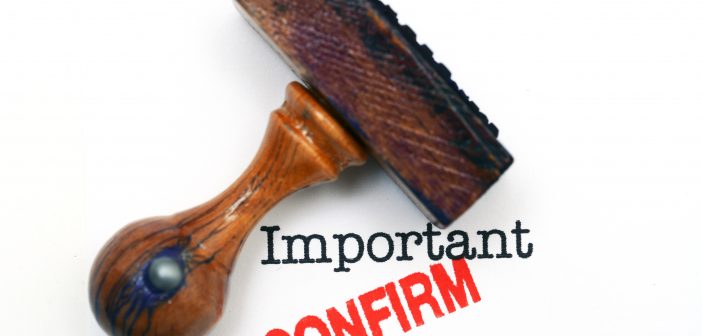As we approach the second anniversary of the roll out of SM&CR to all solo regulated firms, we have an opportunity to reflect on progress. As part of our consulting on compliance issues, we at Compliance Cubed are seeing many firms who have processes in place and want reassurance that they’re on the right track.
In this article I will consider five key SMCR issues:
- Statements of responsibilities
- Identification of certified staff
- Training and competence
- Conduct rule breaches
- Firm culture
Statements of responsibilities – what and how
Every Senior Manager must have a Statement of Responsibilities (SoRs). The document used by the FCA sets out the role titles and what they are responsible for, however for firms this has proven to be just the starting point. While the FCA are looking for a succinct description, firms are more interested in the how: how will they demonstrate that the responsibilities are in practice being fulfilled and how do the ‘prescribed’ and ‘other’ responsibilities interact.
the point of the SM&CR was to help firms improve their performance not to generate more paperwork that just gets filed somewhere safe
Unfortunately, I still come across off the shelf compliance manuals and templates which have yet to be tailored to the firm using them. A statement of responsibility describing someone’s role as being to lead the governing body where there is only one director would indicate that the firm has been too busy with the day job.
We encourage firms to ask themselves, as they work through a statement of responsibility, is this what actually works in our business. Whether the statements cover FCA expectations is, of course, important but the point of the SM&CR was to help firms improve their performance not to generate more paperwork that just gets filed somewhere safe.
Identification of certified staff – don’t underestimate the complexity
There were some initial challenges as firms worked out which of their staff need to be certified as many jobs requiring certification could only be identified through careful consideration of the rules. Now, as part of recruitment, firms are aware of the need to consider whether the new person is caught by the regime. This should be straightforward where they are replacing a leaver but if it’s a new role this can be challenging for some firms.
We still find firms struggling with the ‘significant management function’ and ‘client dealing function’ categories currently causing the most difficulty. In the first instance, significant management functions are not to be confused with senior management functions. The relevant staff are those with significant responsibility for a significant business unit.
While the FCA provides examples of such staff, their list is not exhaustive and there is work to be done to define who has this level of responsibility.
For client dealing functions, the SMCR brought roles other than those who advise and deal into the regime. Now, those who deal with clients or client property in relation to such advice and dealing are also regulated.
Training and competence – initial and ongoing
Firms are aware that the FCA has a rule requiring that staff are competent in the role that they perform. Evidencing this consistently can be a challenge, particularly during the pandemic lockdowns with staff not being in the office. While webinars have been a great tool during this time, ensuring that they are relevant and that learning and thought about application has taken place may sometimes have taken a back seat to keeping the business running.
Whatever the ‘new normal’ looks like SM&CR requires that firms have an effective approach to T&C, not just about qualifications but with a focus on competencies. Having a formal approach with forms to complete gives firms the structure required to underpin the annual certification process. It is clear that this is not just an HR function, line managers need to be involved and buy in to the value of staff meeting the criteria set out to be certified as fit and proper. At this two-year mark, firms should be asking whether their process is aligned with business needs and the SM&CR.
Conduct rule breaches – identifying and correcting
The conduct rules prescribe a minimum standard of behaviour for all who work in financial services and firms are aware that under SMCR, proven breaches of a conduct rule need to result in disciplinary actions and that they have specific consequences.
The disciplinary actions involved include:
- Issuance of a written warning to the individual involved
- A reduction or claw-back of their salary or bonus (for the misconduct)
- The suspension or dismissal of the individual
And the consequences of those actions are as follows:
- The breach will be notified to the FCA
- The firm is also required to provide details of the breach in any regulatory references provided for at least the next six years
So proven misconduct is likely to have a seriously detrimental impact upon an individual’s career, even if a breach comes to light after the individual has left the firm.
If the firm concludes that they would have taken formal disciplinary actions had the individual still been an employee, then they must notify the regulator and issue an updated regulatory reference to the individual’s current employer. Firms know that this can run into issues with employment law and expert assistance should be sought. Will this see a reduction in written warnings for relatively minor misdemeanours?
Firm culture – building for the future
Every speech from the FCA seems to have culture or diversity shoehorned into it – it’s clear the FCA see this as key to achieving their objectives. Fostering a strong culture of integrity and inclusion is not only good practice but it is linked to the FCA’s expectations in the world of SMCR.
Central to meeting SMCR is the administrative workload that comes with compiling and updating statements of responsibility, organisation charts and the certification process. Helping staff see the value in doing so is part of the culture piece.
So consider the following questions:
What does “good culture” look like in your firm? Different firms have different needs and attract different personalities and customers. For example is it possible to have an honest discussion involving people from all parts of the business, from the board to the front desk, about what your customers and the market can reasonably expect of you and, ultimately, where you are falling short? There needs to be a genuine desire to learn and change where necessary.
How can you measure your success? Clarity on what success looks like can then lead to thought about what steps there will be along the way. Those charged with oversight need access to Management Information (MI) that will tell them where the firm is succeeding and where it is falling short of its own values.
A significant challenge is measuring something as subjective as good culture, so firms need to find a way to make the intangible tangible. What change is required and how will staff be motivated to do things differently? One area many firms are looking at is their remuneration structure, particularly around bonuses; are these set in a way that encourages the desired behaviours?
Conclusion
If your firm can demonstrate that it has reviewed each of these five aspects of SM&CR then it has a fair chance of being compliant (and profitable?).




